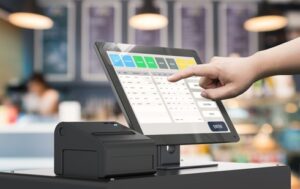Split Payment has caused more and more companies to look for solutions to help them improve cashflow. Online factoring from PragmaGO can come to their aid . Thanks to it, both distant payment terms on invoices and blocked funds in the VAT account become fearless. Current customers of factoring companies who pay at MPP also have to adjust to a slightly different way of submitting invoices for financing.
What is Split Payment all about?
As a reminder: mandatory Split Payment was introduced on November 1, 2019. It involves payment for goods or services to two accounts provided by a bank or SKOK:
- the net value goes to the seller/service provider’s principle account;
- the VAT amount goes to a special VAT account of the seller/service provider.
The split payment mechanism must be applied when all of the following conditions are met simultaneously:
- the gross value of the transaction is at least 15 thousand zlotys;
- the invoice relates to at least one item from the list of goods and services listed in Appendix 15 of the VAT Law;
- both parties to the transaction are VAT payers
Obligations and penalties arising from the introduction of the split payment mechanism (MPP)
The introduction of mandatory Split Payment has added even more obligations for entrepreneurs, and failure to comply can result in unpleasant consequences.
If the invoice is to be settled using MPP, the seller/service provider should include a note on the invoice : “split payment mechanism.” If he fails to do so, he may be subject to an additional tax liability of 30% of the amount of tax resulting from the invoice, or a penal and fiscal sanction for defective invoicing.
The buyer of goods/services must pay for the invoice using Split Payment with a single transfer – the so-called transfer message, in which he is to enter:
- VAT amount;
- gross sales amount;
- invoice number;
- TIN of the seller/service provider.
Importantly: the buyer of goods/services must pay by Split Payment, even if there is no provision on the invoice about the split payment mechanism. If he does not apply the mandatory MPP, he, too, may face consequences: an additional tax liability of 30% of the amount of tax resulting from the invoice, or a penal and fiscal sanction.
How does Split Payment change the model of using factoring services?
The introduction of the mandatory split payment mechanism has clearly affected factoring services.
In factoring, the recipient of goods/services (the debtor) transfers money to the account of the factor (the institution that buys the receivable), i.e. a taxpayer other than the one indicated on the invoice (the invoice shows the factor – the seller/service provider that sells the receivable), so there is an assignment of the receivable at this point. In such a case, the factor is jointly and severally liable with the factor for VAT not accounted for by the factor.
Therefore, if the recipient of the goods/services pays the amount due using MPP, the factor should transfer the tax amount (using Split Payment) to the factor’s VAT account.
- If the invoice states: “split payment mechanism”, the factor pays the factor using MPP before the recipient even transfers the amount due (using Split Payment) to the factor’s account.
- But what happens when there was no provision for MPP on the invoice, the factor simply paid the factor (without applying Split Payment), and the recipient of the goods/services transferred the amount due using the split payment mechanism? Then the factor, after receiving the money from the recipient, gives the factor a guarantee deposit using MPP. The guarantee deposit is a portion of the amount on the invoice, which the factor transfers to the factor only when the recipient of the goods/services transfers money to the factor’s account.
Factoring in PragmaGO vs Split Payment
The additional work that has to be done because of the mandatory MPP is no small inconvenience for many Polish entrepreneurs using factoring. However, our factoring services make it easy to handle Split Payment invoices.
If the invoice is to be settled using MPP, the factor, when adding the invoice in the system, should check the “Mandatory Split Payment” box. In addition, our OCR (a program that automatically reads characters from an image file) reads from the invoice whether it is to be settled using Split Payment, as well as its net value. If necessary, Customer Service staff can independently mark the invoice as covered by the split payment mechanism. If the invoice mentions mandatory Split Payment, funds are sent to the customer using MPP, according to the new regulations.
As you can see, the use of factoring and micro factoring in PragmaGO after the introduction of Split Payment, has changed slightly, just remember one additional field. So you can still easily improve your liquidity without worrying about not complying with the new regulations.
[1] Data from: BIG InfoMonitor, October 2019.


